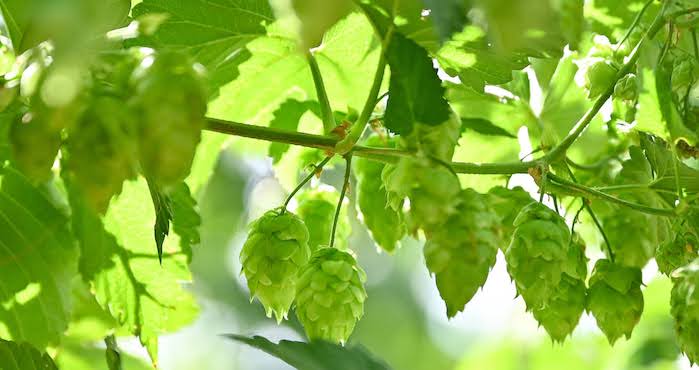Hop Science Newsletter (October 2015)
In this issue: character impact compounds in certain hop varieties, letting yeast control hop flavour, and experimenting with a more gentle dry hopping.

POSSIBLE CHARACTER IMPACT COMPOUNDS IN THE HOP VARIETIES CITRA®, CENTENNIAL AND NELSON SAUVIN
To find these was the goal of this US research team. Using AEDA and GC-Olfactometry they found myrcene and alpha-pinene to have the highest FD (Flavour Dilution) Factor in the non-polar fraction, hence to be of importance. In the polar fraction they found geraniol and linalool but also isovaleric acid and vanillin plus a sulfur component to have the highest FD factors. The sulfur component was identified as S-methyl methanethiosulfonate. The latter compound still needs to be confirmed. Even with this identification, the uniqueness of these three hop varieties cannot be explained.¹
MORE ABOUT THE BITTERNESS IN DRY HOPPED BEERS
The team of Prof. Shellhammer found out that the bitterness in dry hopped beers is influenced by the concentration of humulinones. They also determined the sensory bitterness of the humulinones to be 0.65 that of iso-alpha acids. Another US research team did further research on humulinones and found that hops and hop pellets (but not CO2 extracts) contain different concentrations of this compound. Their formation post-kilning or post-pelleting is time, temperature and variety dependent. As the HSI of the hops correlates positively, an oxidative damage during kilning or storage for their formation is suggested. I am happy the iso-alpha acids are no longer responsible for bringing all the bitterness into the beer by their own…²
LET THE YEAST CONTROL THE HOP FLAVOUR
When we think of yeast and hop aroma, we first think about the biotransformation reactions that take place, where the contribution to flavor is still debatable. Yeast can also be seen as a biosorbant for selective adsorption of hop aroma components. In this context non-viable brewing yeast was used successfully by these Japanese researchers. This application could be used to add hop flavours into alcohol free beers or for identifying hop aroma compounds in beer.³
SHOULD WE TRY TO DRY HOPS IN A MORE GENTLE WAY?
US researchers tried this. They took fresh Cascade hops dried traditionally in a kiln and compared them to hops dried in a freeze drier. The analyses showed that the freeze dried hops were higher in myrcene, while all other important hop aroma components were higher in the kilned dried hops. However the differences were relatively small. Nevertheless when applied in dry hopping the tasters were able to significantly detect the differences between the beers. The flavor and aroma in the beer with freeze dried hops were much more herbal and grassy, while the beer with the kiln dried hops had a more fruitiness expressed.4
EVENTS
BRAU Beviale 2015
November 10th-12th, Nuremberg, Germany
Again, we invite you to discover what hops can do for your beer — Join us at one of our tasting sessions!
REFERENCES:
1. Qian, et al: Key aroma compounds in ‘Centennial’, ‘Citra’, and ‘Nelson Sauvin’ hop identified by aroma extract dilution analysis Let the yeast decide on flavour ! oral presentation at the ASBC Annual Meeting http://www.asbcnet.org/events/annual/proceedings/Pages/33.aspx
2. Maye, P.: Humulinone: A naturally formed hop bitter acid , poster at ASBC Annual Convention http://www.asbcnet.org/events/annual/proceedings/Pages/58.aspx
3. Noro, Y.: Selective adsorption of hop derived aroma substances by nonviable dry brewing yeast, ASBC Annual Convention, http://www.asbcnet.org/events/annual/proceedings/Pages/60.aspx
4. Algazzali, V.: A comparison of quality: Freeze-dried versus kiln-dried Cascade hops, http://www.asbcnet.org/events/annual/proceedings/Pages/62.aspx



